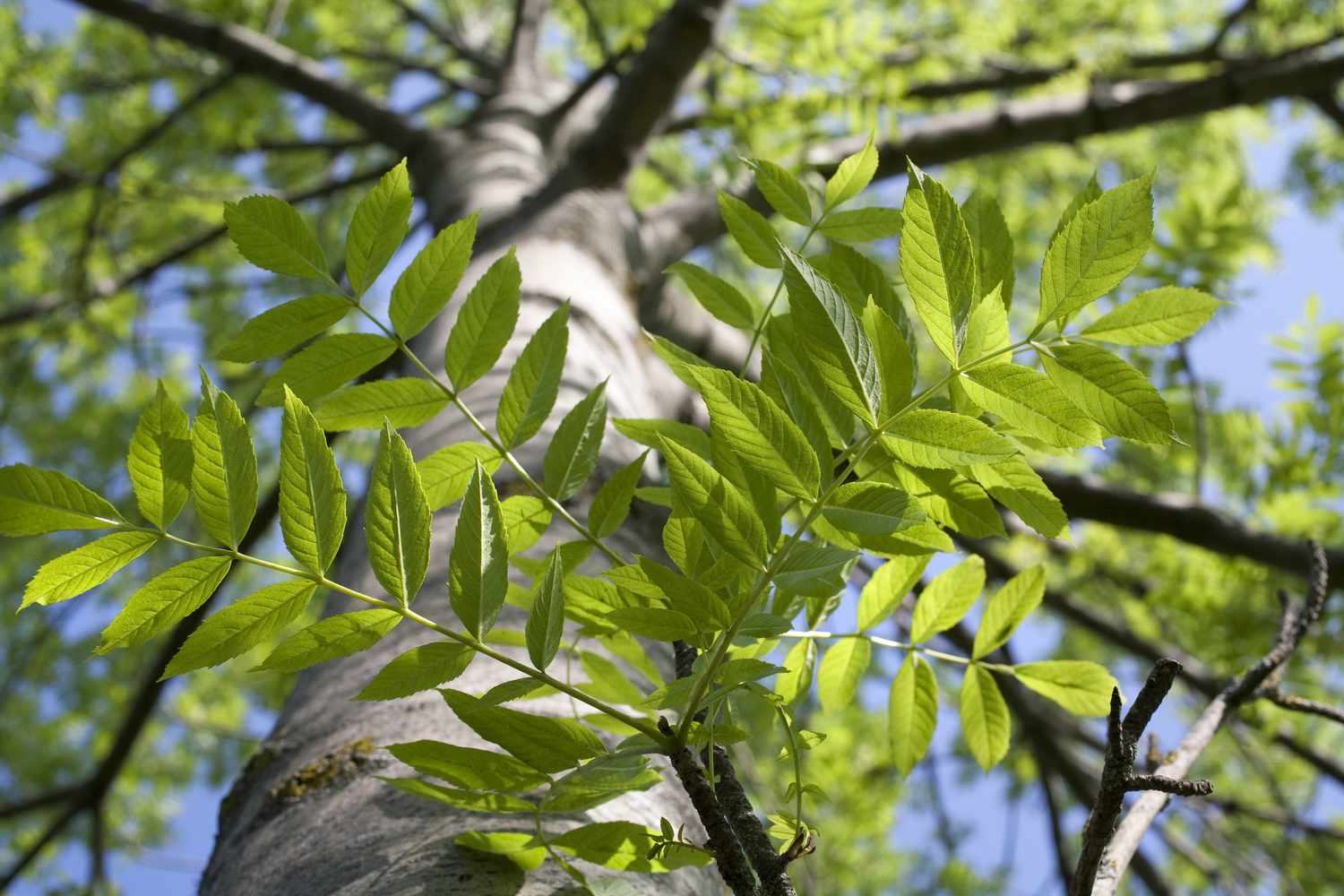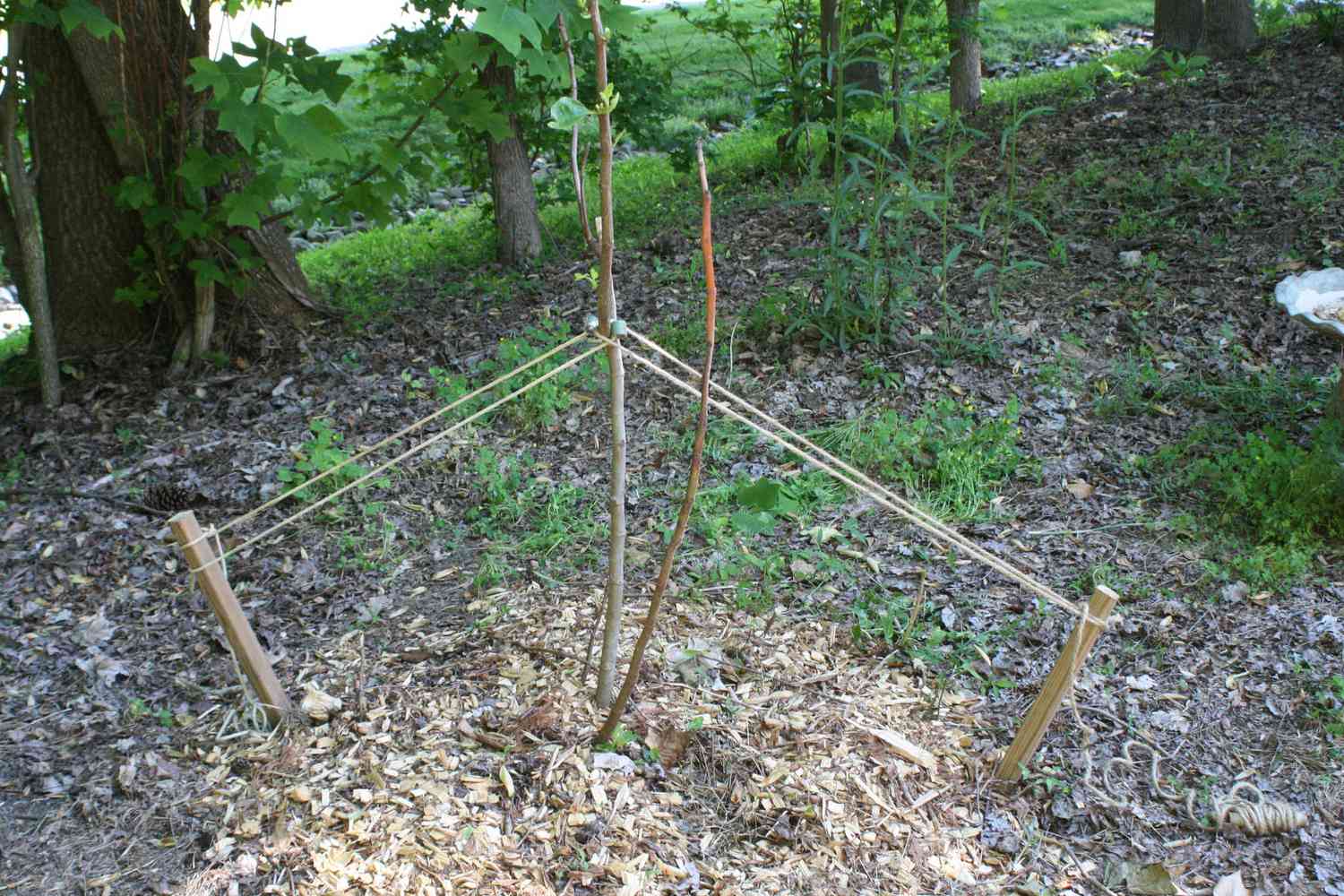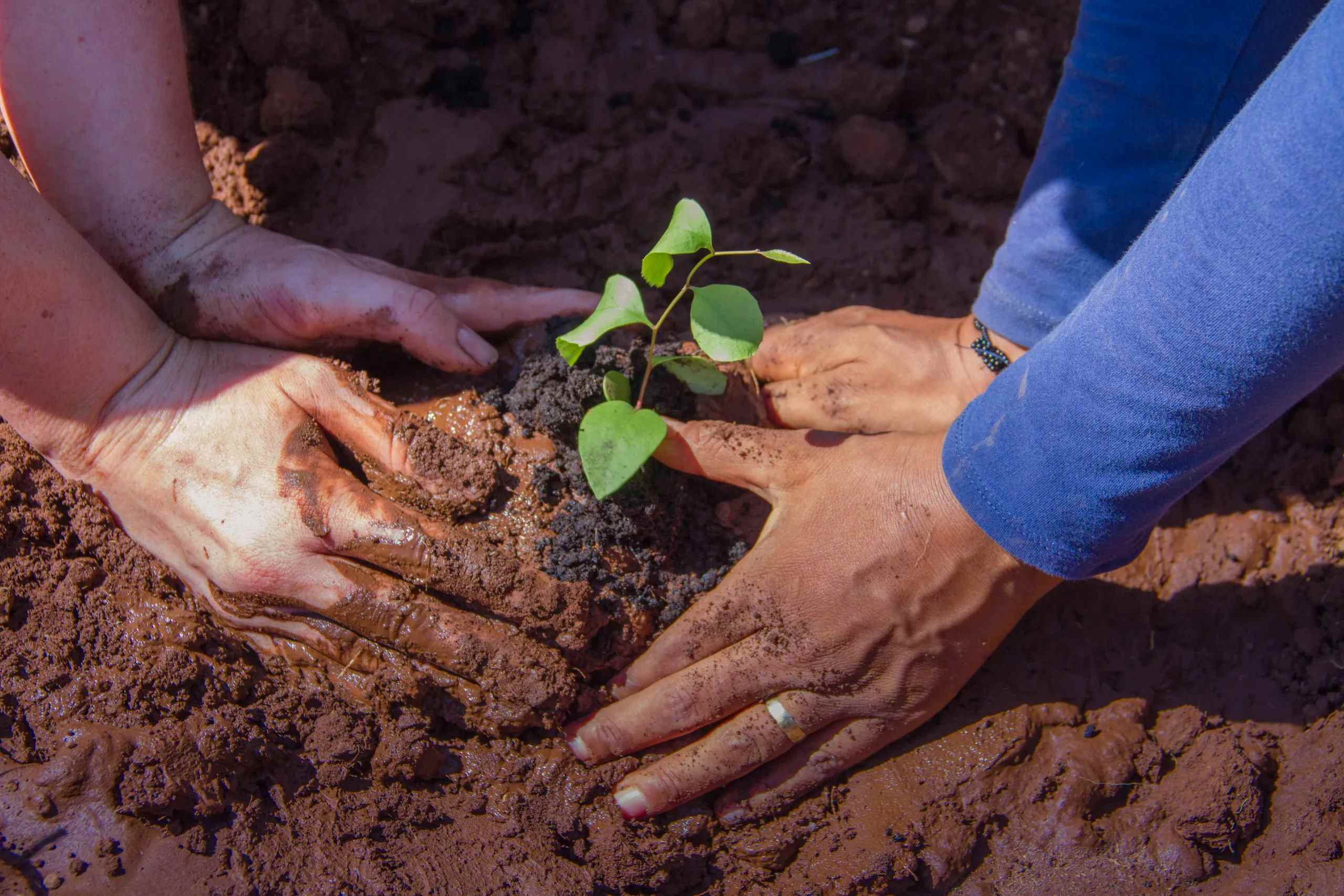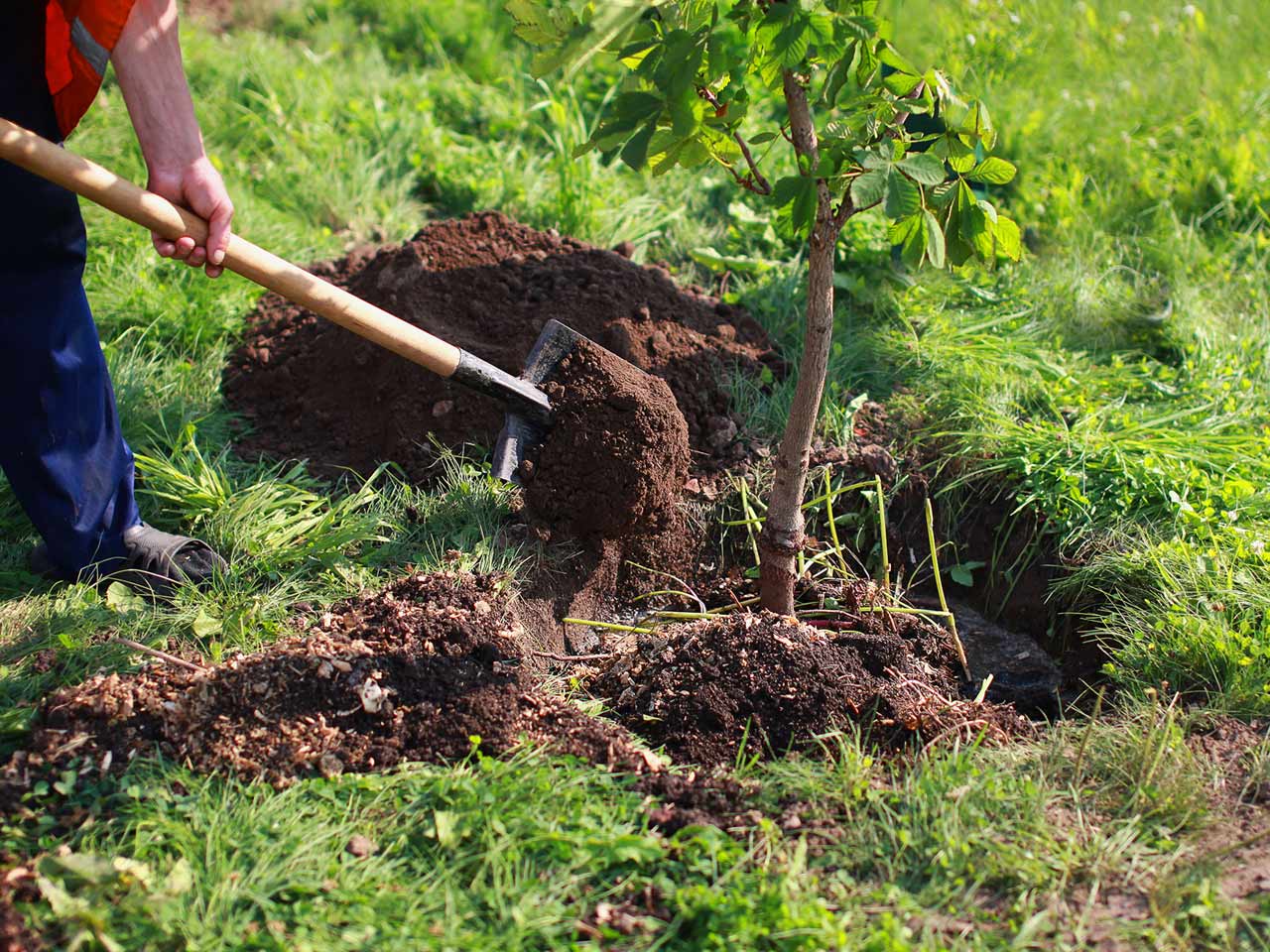Home>Gardening News and Trends>Latest News>How To Identify Ash Trees


Latest News
How To Identify Ash Trees
Modified: January 22, 2024
Learn how to identify ash trees and stay updated with the latest news about ash tree identification. Enhance your knowledge and protect the surrounding environment.
(Many of the links in this article redirect to a specific reviewed product. Your purchase of these products through affiliate links helps to generate commission for Chicagolandgardening.com, at no extra cost. Learn more)
Table of Contents
Introduction
Ash trees are iconic members of the forest landscape, known for their majestic beauty and ecological significance. With their tall trunks and gracefully sweeping branches, ash trees stand as symbols of strength and resilience. However, identifying ash trees among the vast variety of tree species can be a challenge for many nature enthusiasts and arborists.
In this article, we will delve into the characteristics of ash trees and provide you with a comprehensive guide on how to identify them. By learning to recognize the distinct features of ash trees, you will gain a deeper appreciation for these remarkable trees and be able to contribute to their conservation efforts.
Ash trees belong to the genus Fraxinus and are deciduous hardwood trees native to North America, Europe, and Asia. There are over 60 species of ash trees, but the two most commonly found in North America are the white ash (Fraxinus americana) and the green ash (Fraxinus pennsylvanica).
White ash trees typically have straight trunks that can reach heights of over 90 feet, while green ash trees have a more irregular branching pattern and slightly smaller stature. Both species display similar characteristics, making it essential to closely examine various features to determine the specific type of ash tree.
Identifying ash trees involves observing their leaves, bark, branches, buds, tree shape, and growing conditions. By examining these distinguishing traits, you can confidently recognize ash trees and distinguish them from other tree species.
Let’s explore each aspect of ash tree identification in detail, starting with leaf identification.
Characteristics of Ash Trees
Ash trees possess distinct characteristics that set them apart from other tree species. Understanding these features is crucial for accurate identification. Here are the key characteristics of ash trees:
- Leaves: Ash tree leaves are compound and composed of several leaflets. The leaflets are typically arranged in an opposite pattern along the stem, with each leaflet having a serrated or toothed edge. The leaflets are elongated and narrow, with a pointed tip.
- Bark: The bark of young ash trees is relatively smooth and pale gray. As the tree matures, the bark becomes deeply furrowed and develops a diamond-shaped pattern. The ridges and furrows on the bark give it a distinct texture.
- Branches: Ash tree branches have a distinctive opposite branching pattern, meaning that the branches grow out of the main stem in pairs, directly across from each other. These pairs of branches give the tree a balanced and symmetrical appearance.
- Buds: Ash tree buds are small and dark-colored. They are located at the base of each leaf petiole and have a slightly pointed shape. The buds can provide important clues for identification, as they can vary in color and shape depending on the species.
- Tree Shape and Structure: Ash trees have an upright and spreading growth habit, forming a broad canopy. The trunks are typically straight and tall, with branches extending outward in a layered manner. This characteristic growth habit contributes to the distinctive silhouette of ash trees.
- Habitat and Growing Conditions: Ash trees are adaptable and can thrive in various habitats. They are commonly found in forests, woodlands, and along riverbanks. Ash trees prefer moist, well-drained soil but can tolerate a range of soil types. They are also relatively tolerant of shade, although they prefer full sun exposure.
The combination of these characteristics distinguishes ash trees from other tree species. By carefully observing the leaves, bark, branches, buds, and overall shape of the tree, you can confidently identify ash trees in their natural habitat.
Leaf Identification
Identifying ash trees can be significantly aided by examining their leaves. Ash tree leaves are compound, meaning that they are composed of multiple leaflets attached to a single stem. Here’s how you can identify ash trees based on their leaves:
Ash tree leaves are typically composed of 5-11 leaflets arranged in an opposite pattern along the stem. Each leaflet is elongated and lance-shaped, with serrated or toothed edges. The leaflets can range in size between 2 to 6 inches in length, depending on the age and species of the tree.
When inspecting the leaflets, take note of their color. Ash tree leaves are typically bright green during the growing season, transforming into vibrant shades of yellow, orange, or purple in the fall. This autumnal display of colors is one of the reasons why ash trees are highly valued for their aesthetic appeal in landscaping and urban environments.
Another characteristic to observe is the leaflet arrangement. Ash tree leaflets are arranged in an opposite pattern, meaning that each leaflet grows directly across from another leaflet on the same stem. This opposite arrangement sets ash trees apart from other tree species with alternate leaf arrangements.
Pay attention to the leaflet’s base and apex. The base of ash tree leaflets often seems asymmetrical or lopsided, while the apex is sharply pointed. These distinct features contribute to the overall identification of ash tree leaves.
In addition to the leaflet characteristics, you can also examine the leaf’s petiole. The petiole is the stalk that attaches the leaflet to the main stem. In ash trees, the petiole is relatively long, ranging from 1 to 4 inches in length, depending on the species. This long petiole distinguishes ash tree leaves from other tree species with shorter petioles.
By carefully examining the leaf characteristics of ash trees, including leaflet arrangement, size, shape, color, and petiole length, you can confidently identify ash trees in their natural environment. However, leaf identification alone may not be sufficient, as it is essential to consider other distinguishing features of ash trees, such as their bark, branches, buds, and overall tree structure.
Bark Identification
The bark of ash trees undergoes distinct changes as the tree matures, providing valuable clues for identification. The bark characteristics can vary depending on the species and age of the tree. Here is how you can identify ash trees based on their bark:
In their early stages, young ash trees have relatively smooth bark that is pale gray or light brown in color. As the tree matures, the bark becomes more pronounced and develops a unique diamond-shaped pattern. This diamond pattern is created by the intersecting ridges and furrows on the bark surface.
The ridges on mature ash trees are typically shallow and interlace with each other to form a distinct pattern. The furrows, on the other hand, are deeper and create the diamond-shaped sections. This bark pattern is one of the key distinguishing characteristics of ash trees.
The color of the bark can vary across different species. While some ash tree species have a pale gray or light brown bark, others may exhibit a darker gray or even blackish coloration. When identifying ash trees based on bark, take into consideration the overall color and texture.
Another essential aspect to note when identifying ash trees is the bark’s texture. Mature ash tree bark has a relatively rough texture due to the presence of ridges and furrows. However, the surface of the bark is not overly rough or deeply grooved compared to some other tree species.
When observing the bark, pay attention to any unique features or patterns, such as irregular growths or markings. These distinct markings can occur due to natural variations or external factors and can further aid in identifying ash trees.
In summary, mature ash trees have distinctive bark characterized by an interlacing pattern of shallow ridges and deeper furrows, forming a diamond-shaped texture. The color of the bark can vary from pale gray to dark gray or blackish, depending on the species. Additionally, the relatively rough texture and absence of deep grooves distinguish the bark of ash trees from other tree species.
While bark identification is a helpful method, it is important to combine it with other identifying features, such as leaf, branch, and bud characteristics, to ensure accurate identification of ash trees.
Branch Identification
Examining the branching pattern of ash trees can provide valuable insights for their identification. Ash trees have a unique characteristic called opposite branching, which distinguishes them from many other tree species. Here’s how you can identify ash trees based on their branches:
Ash trees have a distinct opposite branching pattern, which means that the branches grow directly across from each other on the main stem. This is in contrast to alternate branching, where branches emerge at different heights and angles along the main stem.
When observing the branches, note the arrangement and spacing. Ash tree branches form pairs that grow horizontally or nearly horizontally, usually at consistent intervals along the main stem. This results in a balanced and symmetrical appearance.
Additionally, take note of the branching angles. Ash tree branches typically have upward-sloping angles, creating an open and airy canopy. This branching pattern contributes to the overall shape and structure of ash trees.
As ash trees grow, their branches may develop additional smaller branches or side shoots. These side shoots also exhibit the opposite branching pattern. However, it is important to note that these secondary branches may not always display the same consistent interval spacing as the primary branches.
When considering branch identification, it’s also essential to observe the overall growth habit of the tree. Ash trees have an upright and spreading growth habit, with branches extending outward in a layered manner. This characteristic growth habit adds to the distinctive silhouette of ash trees in the landscape.
It’s worth mentioning that while the opposite branching pattern is a prominent characteristic of ash trees, there are a few other tree species that also display opposite branching. However, when combined with other identification features like leaflets, bark, and buds, the unique branching pattern further confirms the tree’s identity as an ash.
By carefully observing the opposite branching pattern, spacing, angles, and overall growth habit of the branches, you can confidently identify ash trees among other tree species. However, it is recommended to consider additional identifying features to ensure accurate identification.
Bud Identification
Examining the buds of ash trees is another valuable method for identification. Ash tree buds can provide important clues about the species and age of the tree. Here’s how you can identify ash trees based on their buds:
Ash tree buds are small and typically dark-colored. They are located at the base of each leaf petiole, where the leaf attaches to the stem. The size, shape, and color of the buds can vary across different ash tree species.
When identifying ash tree buds, it is important to note their arrangement and structure. Ash tree buds are often arranged oppositely along the stem, mirroring the opposite branching pattern. Each pair of buds grows directly across from each other, giving the tree a balanced appearance.
Take note of the shape and color of the buds. Ash tree buds may be pointed or elongated, depending on the species. The buds can range in color from reddish-brown to dark brown or black. These distinctive characteristics of ash tree buds can aid in their identification.
It’s worth mentioning that while bud characteristics can be helpful for identification, they may not always be visible or easily accessible, especially during certain times of the year when the buds are not fully developed or covered by foliage.
Additionally, it is important to consider bud characteristics in conjunction with other identifying features, such as leaf, bark, and branch characteristics, to ensure accurate identification. By combining these various features, you can confidently identify ash trees and distinguish them from other tree species.
It is important to note that ash tree buds can vary in appearance depending on the time of year. In the winter months, when the leaves have fallen, the buds may be more visible and prominent. During the growing season, when the tree is in full leaf, the buds may be partially hidden by the foliage.
By closely examining the arrangement, shape, and color of the buds, as well as taking into account their location and structure along the stem, you can successfully identify ash trees based on their distinctive bud characteristics.
Tree Shape and Structure
The shape and structure of ash trees play a significant role in their identification. Ash trees have unique characteristics in terms of their overall shape, growth habit, and structure. Here’s how you can identify ash trees based on their tree shape and structure:
Ash trees have an upright and spreading growth habit. The trunks of ash trees are generally straight, tall, and cylindrical, providing a solid foundation for the tree’s canopy. The height of mature ash trees can reach up to 90 feet, adding to their impressive stature.
When examining ash trees, take note of the branches and their arrangement. Ash trees have an opposite branching pattern, meaning that the branches grow directly across from each other on the main stem. This results in a balanced and symmetrical appearance.
The branches of ash trees also contribute to their overall structure. Ash trees have a layered branching habit, with branches extending outward in a natural, well-spaced manner. This layered structure gives ash trees a distinct silhouette and helps create a broad canopy.
Consider the angles of the branches as well. Ash tree branches typically slope upward, extending away from the trunk at upward angles. This growth pattern contributes to the open and airy appearance of the tree’s canopy.
In addition to the branching pattern, ash trees have a characteristic arrangement of leaves. The leaves tend to grow in clusters at the ends of branches, forming dense foliage when the tree is in full leaf.
It’s important to note that the specific shape and structure of ash trees can vary slightly depending on the species and growing conditions. While white ash (Fraxinus americana) and green ash (Fraxinus pennsylvanica) are the most common species in North America, other species may exhibit slight variations in their growth habits.
In summary, ash trees have an upright and spreading growth habit, with straight trunks and branching patterns that grow directly across from each other. The layered branches and upward-sloping angles contribute to the tree’s distinctive shape and structure. By observing these characteristics, you can confidently identify ash trees in their natural environment.
Habitat and Growing Conditions
Ash trees are adaptable and can thrive in a wide range of habitats, although certain species may have specific preferences. Understanding the habitat and growing conditions of ash trees can further aid in their identification. Here’s what you need to know:
Ash trees are native to North America, Europe, and Asia, and different species may have different habitat preferences within these regions. In general, ash trees are commonly found in various types of forests, woodlands, and along riverbanks.
When it comes to soil requirements, ash trees are relatively adaptable. They can tolerate a range of soil types, including loamy, sandy, and clay soils. However, ash trees generally prefer moist, well-drained soil conditions. They thrive in areas where water is accessible but do not tolerate excessively wet or waterlogged soils.
While ash trees prefer adequate moisture, they can also tolerate periods of drought once established. In regions with prolonged dry spells, regular watering during periods of limited rainfall can benefit the trees’ growth and overall health.
When it comes to sunlight exposure, ash trees are relatively tolerant of shade. However, they prefer full sun exposure, which allows them to maximize their growth potential and maintain a healthy foliage canopy. In areas with dense shade, such as deep forests, ash trees may struggle to compete with other shade-tolerant tree species.
Ash trees are known for their ability to adapt and succeed in different climates. While some species are more cold hardy and thrive in cooler regions, others are more heat tolerant and can tolerate hotter climates.
It is important to note that the habitat and growing conditions can vary for different species of ash trees. Understanding the specific requirements of the particular ash tree species in your region can assist in accurate identification.
By considering the typical habitats where ash trees are found, along with their soil preferences, sunlight tolerance, and adaptability to different climates, you can effectively identify ash trees based on where they are commonly found and their ability to thrive in various growing conditions.
Ash Tree Uses and Importance
Ash trees hold significant importance and have been utilized for various purposes throughout history. These trees are valued for their wood, ecological contributions, and cultural significance. Here are some of the uses and importance of ash trees:
1. Timber: Ash wood is highly prized for its strength, durability, and attractive grain patterns. It is commonly used in the production of furniture, flooring, cabinetry, and sports equipment such as baseball bats and hockey sticks. The straight grain and resistance to splitting make ash wood ideal for these applications.
2. Firewood and Charcoal: Ash trees are excellent sources of firewood due to their relatively high energy content. The wood burns well and produces a good amount of heat. Ash trees are also used for charcoal production, as the wood can be burned at high temperatures, resulting in a quality charcoal product.
3. Ecological Significance: Ash trees play a crucial role in ecosystems. They provide habitat and food sources for a variety of wildlife, including birds, insects, and mammals. Many species of butterflies and moths rely on ash trees as host plants for their larvae. The dense foliage of ash trees also provides shade, reducing soil erosion and maintaining a balanced microclimate.
4. Landscaping and Ornamental Purposes: Ash trees are valued for their aesthetic appeal in landscaping. They are often planted as shade trees in parks, gardens, and urban areas due to their attractive foliage, graceful form, and tolerance to various growing conditions. Ash trees can enhance the visual appeal of a landscape and provide a pleasant environment for outdoor activities.
5. Medicinal Uses: Some parts of ash trees have been used in traditional medicine for their potential medicinal properties. For example, the bark of some ash tree species has been used for its anti-inflammatory and analgesic properties. However, it is important to note that the medicinal uses of ash trees require further scientific research and should be approached with caution.
6. Cultural and Mythological Significance: Ash trees hold cultural and mythological importance in different societies. In Norse mythology, the ash tree known as Yggdrasil was considered the cosmic tree that connected the nine worlds. Ash trees have also been associated with wisdom, protection, and rebirth in various folklore and spiritual beliefs.
The widespread use and ecological significance of ash trees highlight their importance in both human and natural ecosystems. However, it is crucial to note that ash trees are currently facing significant threats, which are discussed in the next section.
Threats to Ash Trees
Ash trees are currently facing significant threats that have serious implications for their survival. The primary threat to ash trees is the invasive insect species known as the emerald ash borer (EAB). Here are the key threats to ash trees:
1. Emerald Ash Borer: The emerald ash borer is a destructive beetle native to Asia that has decimated ash tree populations across North America and Europe. The larvae of the emerald ash borer feed on the inner bark of ash trees, disrupting the tree’s ability to transport water and nutrients. This leads to the decline and eventual death of the tree. The spread of the emerald ash borer has resulted in the loss of millions of ash trees.
2. Loss of Genetic Diversity: The widespread devastation caused by the emerald ash borer has led to a significant loss of genetic diversity among ash tree populations. This loss of genetic diversity reduces the resilience and adaptive capabilities of ash trees, making it even more challenging for them to withstand threats and survive in changing environments.
3. Environmental Changes: Ash trees, like many other tree species, are also vulnerable to the impacts of climate change. Changes in temperature, precipitation patterns, and extreme weather events can negatively affect ash tree health and increase their susceptibility to pests, diseases, and other stressors.
4. Other Pests and Diseases: In addition to the emerald ash borer, ash trees can be susceptible to other pests and diseases, such as ash yellows, ash anthracnose, and verticillium wilt. These pathogens can weaken and eventually kill ash trees, further contributing to their decline.
5. Lack of Natural Resistance: One of the major challenges in combating the emerald ash borer is the lack of natural resistance among North American ash tree species. Unlike their Asian counterparts, which have evolved natural defenses against the beetle, most North American ash tree species do not have an innate resistance to the emerald ash borer.
6. Human Activities: Human activities, such as the movement of infested firewood or the improper disposal of ash tree material, can contribute to the spread of pests and diseases. It is essential to follow proper quarantine regulations and adopt responsible practices to minimize the risk of further contamination and loss of ash tree populations.
The threats facing ash trees highlight the urgent need for conservation efforts, including the development of management strategies, biological controls, and breeding programs aimed at developing resistant ash tree varieties. Understanding these threats and taking action to combat them is crucial to preserve the ecological and cultural importance of ash trees for future generations.
Conclusion
Ash trees are remarkable members of our natural environment, known for their beauty, resilience, and ecological significance. By understanding the key characteristics of ash trees, including their leaves, bark, branches, buds, and overall tree shape, individuals can confidently identify these trees in their surroundings.
However, the identification of ash trees goes beyond merely recognizing their physical traits. It also involves appreciating their importance and the role they play in ecosystems and human society. Ash trees have been historically valued for their timber, used in the production of furniture, flooring, and sports equipment. They also contribute to the biodiversity of forests and provide habitat for various wildlife.
Unfortunately, ash trees face significant threats, most notably from the invasive emerald ash borer. This destructive beetle has caused the widespread decline and mortality of ash tree populations, leading to the loss of ash tree genetic diversity and ecological stability. The impacts of climate change and other pests and diseases further compound the challenges facing ash trees.
To ensure the preservation of ash trees, it is crucial to implement proactive management strategies, raise awareness about the threats they face, and take steps to prevent the spread of invasive species and diseases. Additionally, supporting research into breeding programs for resistant ash varieties can offer hope for the future survival of these trees.
In conclusion, the identification and conservation of ash trees are essential for preserving their ecological, cultural, and economic value. By staying vigilant, understanding the threats they face, and advocating for their protection, we can contribute to the survival of ash trees and the overall health and diversity of our natural landscapes.





